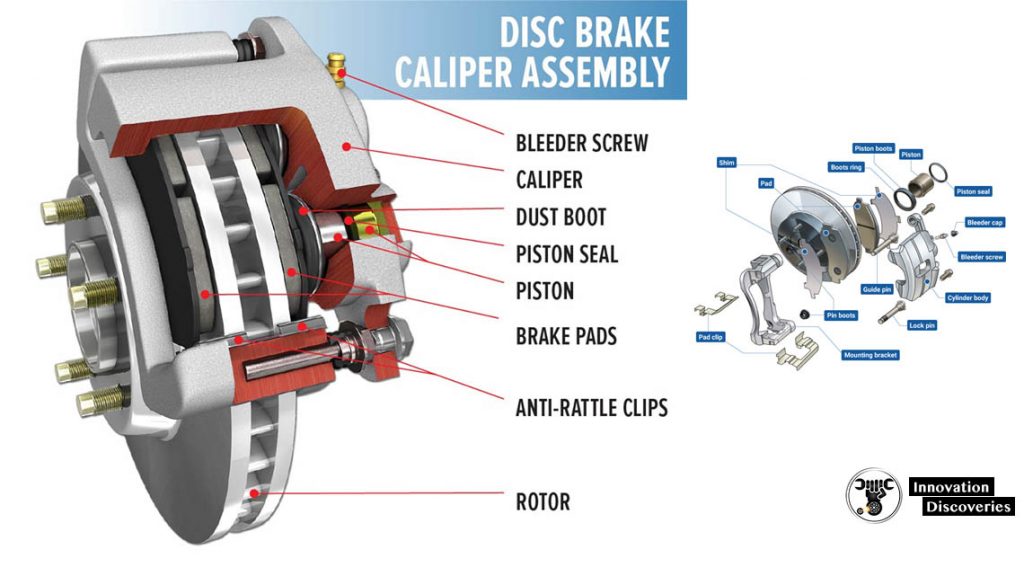
Brake rotors of disc brakes rotate with the wheels, and brake pads, which are fitted to the brake calipers, clamp-on these rotors to stop or decelerate the wheels. The brake pads pushing against the rotors generate friction, which transforms kinetic energy into thermal energy.
The thermal energy generates heat, but this heat can be effectively diffused as the main components are exposed to the atmosphere. This heat-dissipating property decreases brake fade, the phenomenon in which the heat affects the braking performance. Another advantage of disc brake is its resistance to water fade, which occurs when the water on the brakes significantly reduces the braking force. When the vehicle is in motion, the rotor spins at high speeds and this rotational motion discharges the water from the rotors themselves, resulting in stable braking force.
CONSTRUCTION
The brake rotor (disc) which rotates with the wheel, is clamped by brake pads (friction material) fitted to the caliper from both sides with pressure from the piston(s) (pressure mechanism) and decelerates the disc rotation, thereby slowing down and stopping the vehicle.
1. Rotor
Circular disc bolted to the wheel hub that spins with the wheel. Rotors are most commonly made of cast iron or steel; however, some very high-end cars use a carbon-ceramic rotor. Rotors can be slotted or drilled for better heat dissipation.
2. Brake pads
The component that pushes into the rotor, creating friction that slows and stops a car. They feature a metal portion called a shoe and a lining that is attached to the shoe. The lining is what actually comes in contact with the rotor and wears away with use.
Linings are made of different materials and fall into three categories:
Organic, semi-metallic and ceramic. The lining material chosen will impact the length of brake life,
The amount of noise heard when the brakes are applied,
And how quickly the brakes bring a car to a halt.
3. Piston
Cylinder connected to the brake system hydraulics. The piston is what moves the brake pads into the rotor when the driver presses the brake pedal. Some brake systems have a single piston that moves both pads, while others have two pistons that push the brake pads from each side of the rotor. Others still have four, six, or even eight pistons for higher braking power, at the expense of added cost and complexity.
4. Caliper
Housing that fits over the rotor and holds the brake pads and pistons, as well as contains ducting for brake fluid. There are two types of brake calipers: floating (or sliding) and fixed. Floating calipers “float” over the rotor, and only have pistons on a single side. When the driver presses the brakes, the pistons press the brake pads on one side into the rotor, which causes the caliper to slide over so that the pads on the non-piston side of the caliper also contact the rotor. Fixed calipers are bolted in place, and instead, have pistons on both sides of the rotor that move when the driver applies the brakes. Fixed calipers apply brake pressure more evenly and clamp more firmly on the rotor, however, floating calipers are found on most cars and are perfectly adequate for everyday driving.
5. Sensors
Some vehicles have brakes that contain sensors embedded in the brake pads which work to tell the driver when the pads are worn out. Other brake sensors play a part in the vehicle’s ABS system.
Disc brakes are generally used in passenger cars, but due to their stable performance at higher speeds and resistance to brake fade, they are gradually spreading into the commercial vehicle segment, where drum brakes were traditionally chosen for their longer service life. There are two types of disc brakes.
The “opposed piston type disc brake” has pistons on both sides of the disc rotor, while the “floating type disc brake” has a piston on only one side. Floating caliper type disc brakes are also called sliding pin type disc brakes.
WORKING PRINCIPLE
When the driver steps on the brake pedal, the power is amplified by the brake booster (servo system) and changed into a hydraulic pressure (oil-pressure) by the master cylinder. The pressure reaches the brakes on the wheels via tubing filled with brake oil (brake fluid). The delivered pressure pushes the pistons on the brakes of the four wheels. The pistons in turn press the brake pads, which are friction material, against the brake rotors which rotate with the wheels. The pads clamp on the rotors from both sides and decelerate the wheels, thereby slowing down and stopping the vehicle.
- When the brake pedal is pressed, the high-pressure fluid from the master cylinder pushes the piston outward.
- The piston pushes the brake pad against the rotating disc.
- As the inner brake pad touches the rotor, the fluid pressure exerts further force and the caliper moves inward and pulls the outward brake pad towards the rotating disc and it touches the disc.
- Now both the brake pads are pushing the rotating disc, a large amount of friction is generated in between the pads and rotating disc and slows down the vehicle and finally, let it stop.
- When a brake pad is released, the piston moves inward, the brake pad away from the rotating disc. And the vehicle again starts to move.
READ: What’s the difference between brake shoes and brake pads?
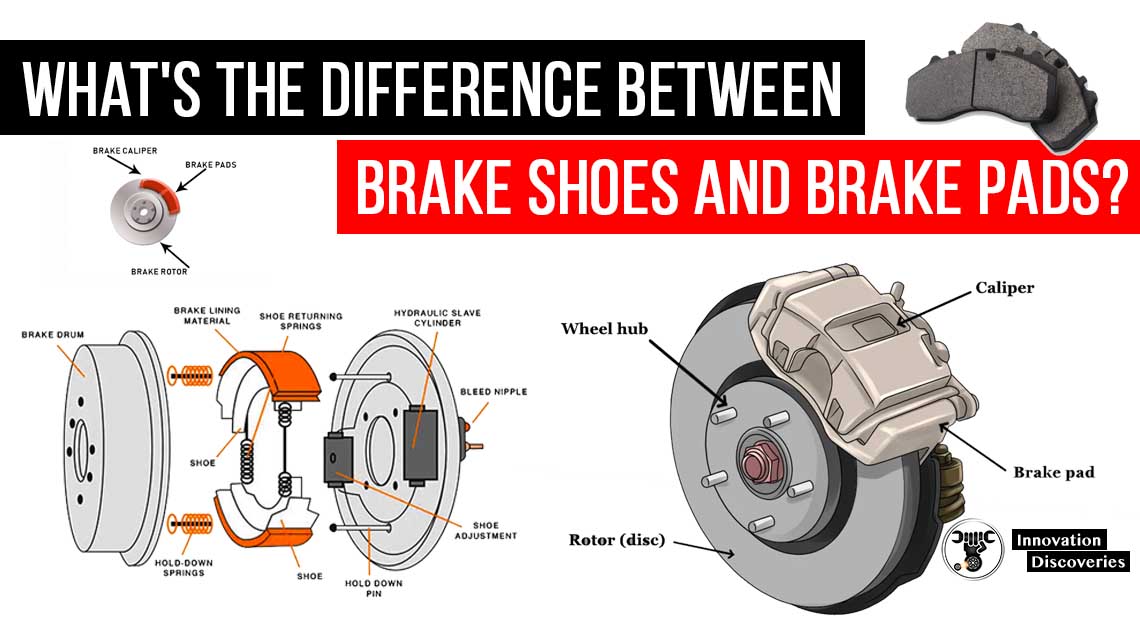
TYPES OF DISC BRAKES
There are two types of disc brakes. One is called the “opposed piston type disc brake” which has pistons on both sides of the disc rotor, and the other is the “floating type disc brake” which has a piston on only one side. The floating type disc brakes are also called the sliding pin type disc brakes.
1. Opposed Piston Type Disc Brakes
The opposed piston type is a disc brake that has pistons on both sides of the disc rotors.
The opposed piston type disc brake features a stable braking force as well as a high level of controllability.
The swept areas of the brake pads are enlarged to increase braking force, and here opposed piston types are favored. This is because of its advantage where the number of pistons can be increased to realize even distribution of pressure on the rotors from both sides. Depending on the size of the brake pads, there are several types, including the 4-pot type which has two pistons on each side for a total of four, and the 6-pot type which has three pistons on each side for a total of six.
2. Floating Type Disc Brakes
Floating type is a disc brake which has a piston on only one side and is also called the sliding type disc brake.
On the floating type disc brakes, the piston pushes the inner brake pad against the rotor when the brakes are engaged. This generates a reaction force that moves the caliper itself along with the slide pin, pushing the outer pad against the rotor to clamp it from both sides.
Many passenger car disc brakes are of the floating caliper type since this type has a relatively simple and lightweight construction, which allows for lower manufacturing costs.
Floating type disc brakes for commercial vehicles
Disc brakes are used mainly for passenger cars, but due to their consistent performance at higher speeds and resistance to brake fade, they are gradually spreading into the commercial vehicle segment, where drum brakes were traditionally chosen for their resistance against wear.
TYPES OF ROTOR
1. Smooth Rotors
Smooth rotors are identified by their flat, smooth surface. For most cars and trucks on the road, smooth rotors are original equipment (OE) because of their versatility for many driving conditions. The main benefit of smooth rotors is that they tend to wear evenly, helping your brake pads last longer. If you want to keep the smooth rotor but still go for the upgrade, look for premium metal that absorbs more heat.
2. Drilled or Dimpled Rotors
Drilled rotors are identified by the pattern of holes that have been drilled through the rotor disc. Dimpled rotors are similar, though instead of holes there are
Dimples that have been drilled to the rotor’s minimum thickness level,
Retaining more structural integrity than a fully drilled rotor.
These rotor types help the brake pads to better grip the rotor,
Giving it more initial bite and increasing stopping power.
Note that drilled or dimpled rotors are typically found in combination with slotted rotors.
3. Slotted Rotors
Slotted rotors are recognized by carved lines found on the rotor. These carved slots help to cool the rotor during high-performance use. They also help to remove dirt and other debris from the disc and brake pad, helping to maintain consistent contact for more efficient braking. Slotted rotors are perfect for vehicles that see frequent, heavy towing.
4. Drilled/Dimpled and Slotted Rotors
Rotors that are both drilled (or dimpled) and slotted, while effective, are best for trucks that want the added aesthetic, such as those with wheels that have a more open design. Not only will they look great through an open-wheel, but the drilled holes assist with an initial bite while the slots are designed to remove dust and debris from between the rotor and brake pad.
READ: Ways You Are Damaging Your Brake and Clutch without Knowing It
ROTOR MATERIALS
Brake rotors can be made of six different materials, each with its own advantages. Let’s take a look at each.
1. Cast Iron
This is the very definition of old school when it comes to a brake rotor. It’s one or two pieces and gets the job done. In fact, it’s the most common material for brake rotors. The right design (usually two-piece) can even work well in a performance vehicle. However, it’s also the heaviest option, which affects the overall weight of your car and its handling, since that weight is right up there with your front wheels.
2. Steel
Steel has been the racer’s choice for years because a steel brake rotor is thinner, weighs less and handles heat better. The downside: Steel rotors aren’t as durable as some others, and warped rotors can cause noise and a pulsating pedal when you brake.
3. Layered Steel
Layering sheets of steel together and laminating them makes them resistant to the warping you might find in a straight steel brake rotor.
It’s a favorite of racers who don’t want frequent brake rotor replacement and repair,
But manufacturers are currently only targeting professional
Racers and production is limited,
So, it’s not terribly common in passenger vehicle applications.
4. Aluminum
Aluminum brake rotors easily dissipate heat but melt at lower temperatures as well as other options. Aluminum is a favorite for motorcycles that weigh less than a heavy car,
Truck or SUV and are easier on the rotors when braking.
5. High Carbon
These are iron, but with a lot of carbon mixed in. They can take a lot of heat and dissipate it quickly. The metallic content helps the rotor avoid cracking under high stress, and brake noise and vibration are reduced as well. The only downside is the price, which is significantly higher than straight iron or aluminum.
6. Ceramic
What’s your favorite super-car? Ferrari? Porsche? Lamborghini? Odds are it’s packing ceramic brake rotors. They offer the highest heat capacity (85 percent higher than cast iron) and superior dissipation, and they maintain a more consistent force and pressure as the temperature of the rotors rises. Ceramic is the highest-performance brake rotor available today.
READ: Braking At Low Speeds – Why Are My Brakes Making A Noise?
ADVANTAGES AND DISADVANTAGES
Advantages
- It is lighter than drum brakes.
- This has stronger cooling (because it directly exposes the braking surface to the air)
- That offers better resistance to fade.
- Provides uniform pressure distribution
- The replacement of brake pads is easy.
- By design, they are self-adjusting brakes.
Disadvantages
- It is costlier than drum brakes.
- Higher pedal pressure is required for stopping the vehicle. This brake system is installed with a vacuum booster.
- No servo action is present.
- It is difficult to attach a suitable parking attachment.
READ: Learn All About Brake Rotors
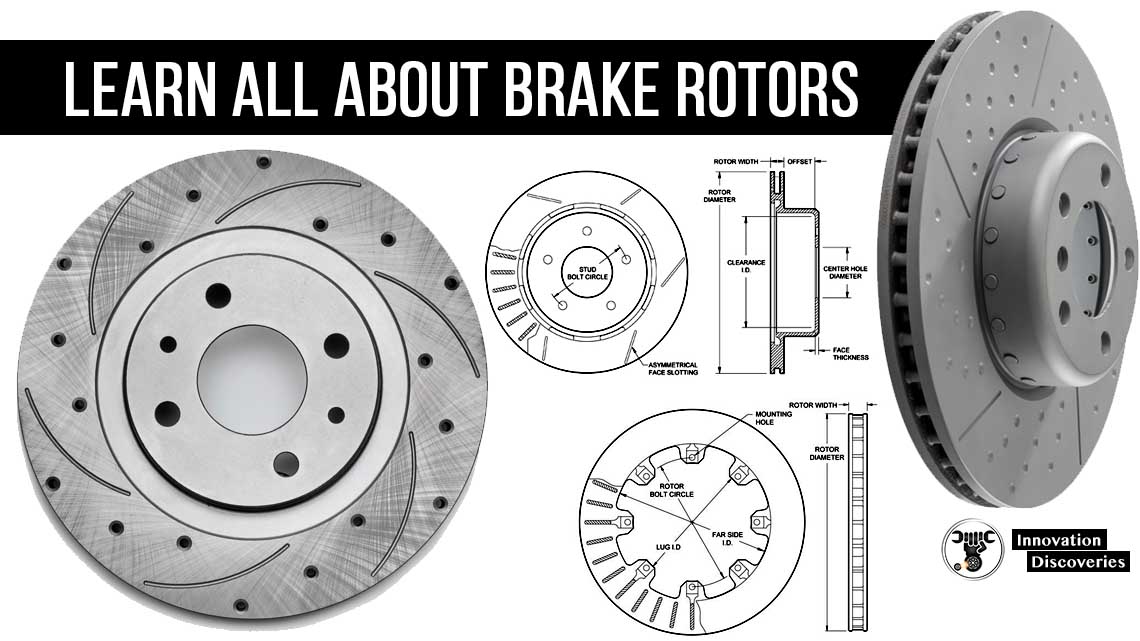
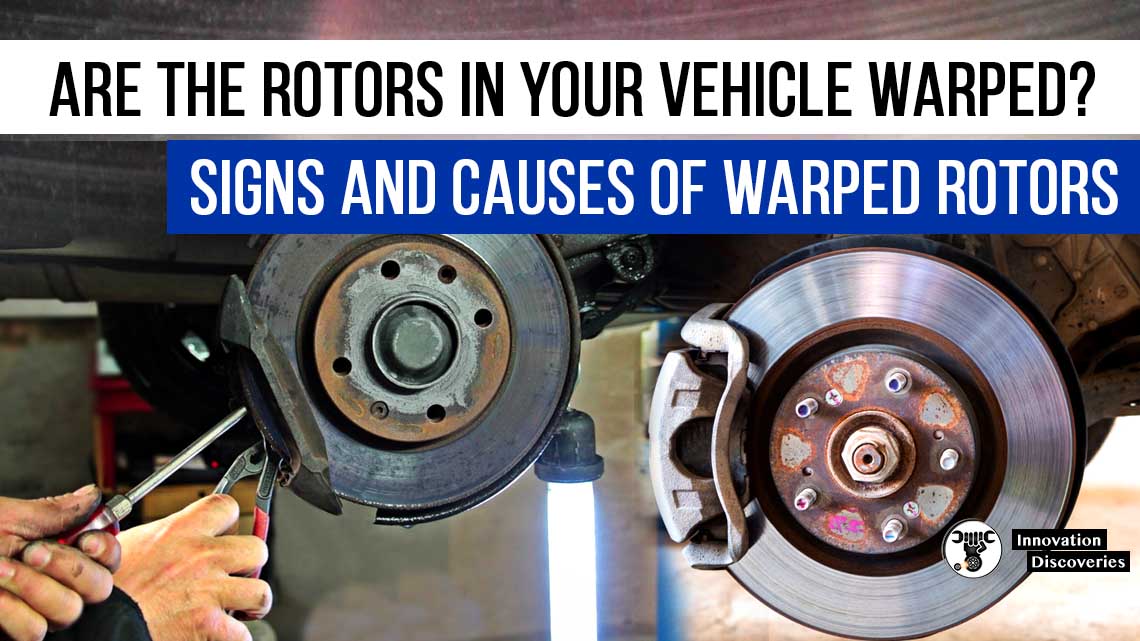



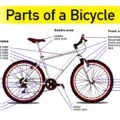
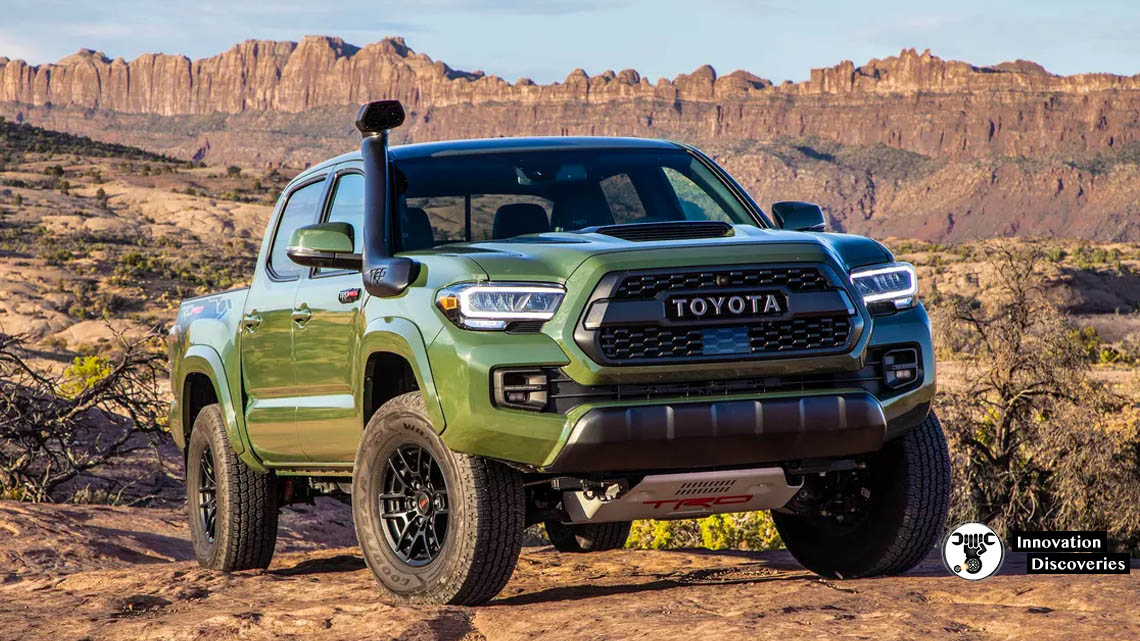
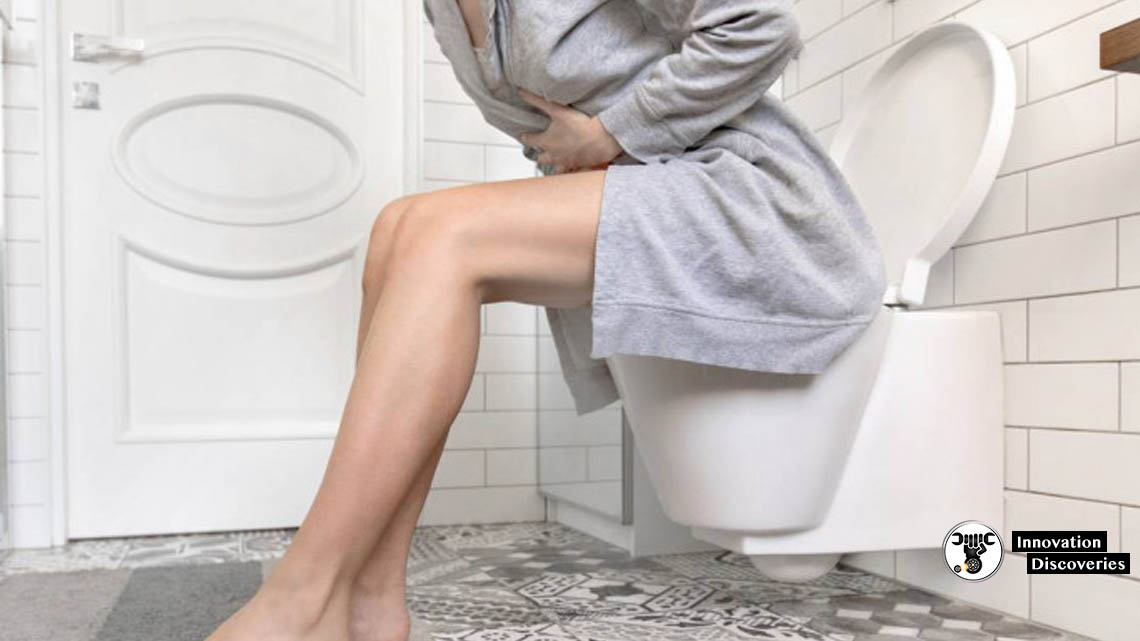
6 Comments